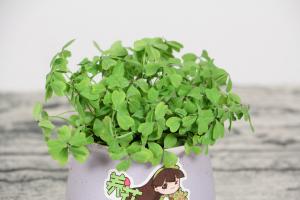Can I Plant Peppers and Tomatoes Together?
Many gardeners wonder whether it is possible to plant peppers and tomatoes together in the same bed or container. The short answer is yes, but there are a few important considerations to keep in mind when doing so.
Companions or Foes?
Peppers and tomatoes actually complement each other quite well as gardening companions. For one thing, they have similar growing requirements. Both need plenty of sunlight, warm soil, and consistent moisture to thrive. Additionally, they are both members of the nightshade family, which means they are susceptible to many of the same pests and diseases.
However, it's important to note that tomatoes and peppers are prone to different types of problems within the nightshade family. Tomatoes are often attacked by aphids, whiteflies, and hornworms, while peppers are more likely to suffer from mites, thrips, and flea beetles. Planting them together does not necessarily mean they will be immune to these issues, but it does make it easier to control them since you can address the problems for both crops at the same time.
Benefits
In addition to complementing each other's growing requirements and pest control, planting peppers and tomatoes together can also offer a few extra benefits:
Efficient use of space - both crops grow upwards, so you can maximize your garden or container space with less waste.
Improved soil health - alternating root depths and nutrient requirements can help improve soil fertility and reduce the risk of disease.
Higher yields - some gardeners have reported increased yield and quality of both crops when they are planted together.
Tips for Success
While planting peppers and tomatoes together can bring many benefits, there are a few tips to keep in mind to ensure success:
Choose compact varieties - both peppers and tomatoes come in many different sizes, but choosing compact varieties will help you fit more plants in a small space.
Provide support - both crops are prone to toppling over when they start producing fruit, so invest in a sturdy trellis or cage system to keep them upright.
Avoid overcrowding - while it can be tempting to plant as many plants as possible, be sure to leave enough space between plants to allow for adequate air flow and to reduce competition for nutrients.
Water deeply and consistently - both peppers and tomatoes need consistent moisture to thrive, so make sure your soil stays evenly moist throughout the growing season.
Conclusion
In conclusion, planting peppers and tomatoes together is not only possible, but it can also bring several benefits to your garden. As long as you keep in mind their similar growing requirements, individual pest and disease vulnerabilities, and follow the tips for success, you can successfully cultivate both crops in the same bed or container. Happy gardening!

 how many times do yo...
how many times do yo... how many planted tre...
how many planted tre... how many pine trees ...
how many pine trees ... how many pecan trees...
how many pecan trees... how many plants comp...
how many plants comp... how many plants can ...
how many plants can ... how many plants and ...
how many plants and ... how many pepper plan...
how many pepper plan...




























